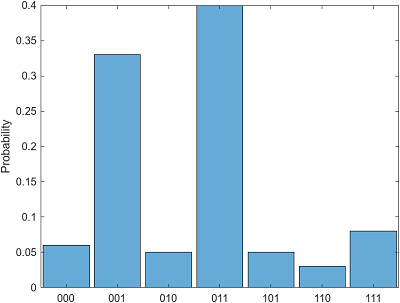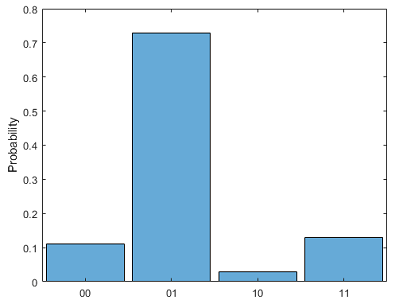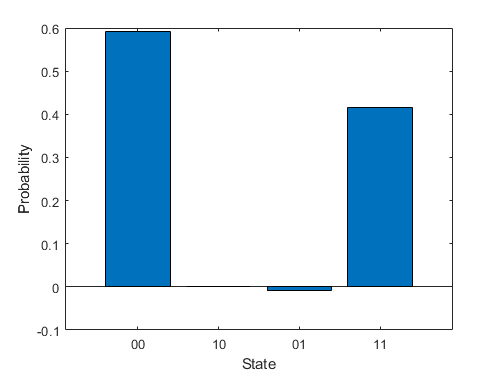quantum.gate.QuantumMeasurement Class
Namespace: quantum.gate
Installation Required: This functionality requires MATLAB Support Package for Quantum Computing.
Description
A QuantumMeasurement object represents the measurement result of a
quantum circuit, either by running the circuit remotely on a quantum device or by simulating
the circuit locally with random sampling. This object contains information about the counts of
all measured states of the n qubits of the circuit.
Creation
Use
runto run a circuit remotely on a quantum device and fetch the finished task usingfetchOutputto return aQuantumMeasurementobject.Use
randsampleon aQuantumStateobject that represents the quantum state of the qubits of a circuit.randsamplerandomly samples this state locally (with a specified number of shots) and returns the measurement result as aQuantumMeasurementobject.
Properties
Methods
Examples
Version History
Introduced in R2023a


